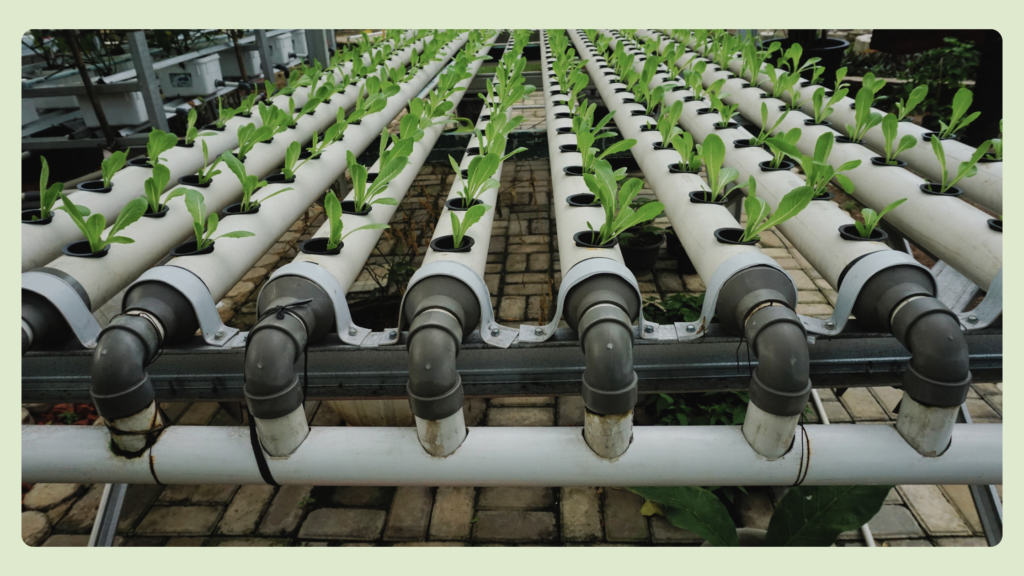Climate change is reshaping agriculture, bringing both opportunities and challenges for farmers worldwide. With rising temperatures, unpredictable weather patterns, and extreme events like floods or droughts, the impact of climate change on agriculture is becoming more evident.
While some crops benefit from changing conditions, others suffer losses, forcing farmers to rethink their practices. The situation is complex—a mix of good, bad, and uncertain outcomes.
Let’s explore how climate change affects agriculture and what we can do to adapt.
Positive Impact of Climate Change on Agriculture
Not all the effects of climate change are negative—some plants thrive under certain conditions.
- Increased CO₂ Levels: The rise in atmospheric carbon dioxide can stimulate plant growth, especially for crops like wheat, soybeans, and rice. CO₂ helps plants through enhanced photosynthesis, allowing them to grow faster and produce more biomass.
- Longer Growing Seasons: In regions with warming climates, growing seasons have extended, allowing for multiple crop cycles per year. Crops like maize, tomatoes, and beans benefit from these prolonged warm conditions.
- New Crop Opportunities: Crops that were once limited to tropical areas, such as coffee and bananas, are now viable in regions that have traditionally had cooler climates. This shift opens opportunities for farmers in places like Northern Europe or Canada.
While these benefits may seem promising, they come with new risks.
Negative Impact of Climate Change on Agriculture
For every advantage, some challenges require careful management. Unfortunately, the impact of climate change on agriculture is often felt more severely in vulnerable areas.
- Extreme Heat and Drought: While slightly warmer temperatures may benefit certain crops, extreme heat waves can trigger plant stress, lower yields, and even kill crops. In drought-prone areas, water availability decreases, making it harder for farmers to irrigate fields. Crops such as maize and rice are particularly sensitive to these changes.
- Increased Precipitation and Flooding: On the flip side, some regions are experiencing heavier rainfall and flooding. Excess water can drown crops, damage root systems, and make soil too wet for replanting. Coastal farmlands are also threatened by rising sea levels and soil salinization.
- Pests, Diseases, and Weeds: Warmer climates and changing rainfall patterns create ideal conditions for pests and fungal diseases to spread. Insects like the fall armyworm are becoming more widespread, damaging crops like corn and sorghum. Weeds also thrive in warmer climates, increasing the need for herbicides and adding to farmers’ expenses.
Recent Findings: The Latest Developments
- IPCC Reports: Recent data from the Intergovernmental Panel on Climate Change (IPCC) indicates that global crop yields for wheat, corn, and rice could decline by 10-25% by 2050 if no action is taken.
- Crop Adaptation Efforts: Scientists are developing climate-resilient crop varieties, such as drought-tolerant wheat and heat-resistant maize, to help farmers cope with extreme weather.
- Shift in Agricultural Regions: Countries in the Northern Hemisphere, like Russia and Canada, are seeing new opportunities for crop production as their climates warm. However, tropical and equatorial regions face harsher conditions, threatening food security in those areas.
How Farmers Can Adapt to Climate Change
There are several strategies farmers can adopt to minimize the impact of climate change on agriculture and improve crop resilience. Here are a few practical ideas:
- Switch to Climate-Resilient Crops
- Growing drought-tolerant or heat-resistant varieties ensures better survival. Crops like millet, sorghum, and cassava are naturally more resilient to climate extremes.
- Experimenting with new crops that suit the changing weather conditions can also help diversify income.
- Greenhouses and Vertical Farming
- Greenhouses help protect crops from sudden weather changes and ensure a controlled environment. For urban farmers, vertical farming or vertical tower gardening offers a space-efficient way to grow food indoors, safe from unpredictable conditions.
- Reforestation and Agroforestry
- Planting trees along farm borders creates natural windbreaks and reduces heat stress on crops. Agroforestry systems, where crops are grown alongside trees, help retain soil moisture and improve biodiversity.
- Raised Beds and Smart Irrigation
- Using raised beds can protect plants from waterlogging and reduce the spread of weeds. At the same time, drip irrigation systems can conserve water and deliver it efficiently to the roots of plants, minimizing waste.
- Mixed Cropping and Crop Rotation
- Planting different plant varieties of the crop reduces the risk of total crop failure. Crop rotation also improves soil health, lowers the risk of pest infestations, and minimizes the need for chemical fertilizers.
What’s Next?
The impact of climate change on agriculture is undeniable, and farmers have to face this global challenge. However, with innovative technologies, sustainable practices, and policy support, agriculture can adapt to these changes. Educating the farmers to use climate-resilient seeds and smart irrigation solutions will be a good way to support them and help them ensure food security.
While we may not be able to stop climate change overnight, small actions such as reducing emissions and promoting reforestation, etc can help. Every step towards sustainable practices can make a difference in building a resilient agricultural system that can withstand the challenges of the future.




